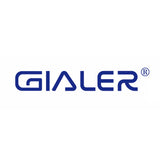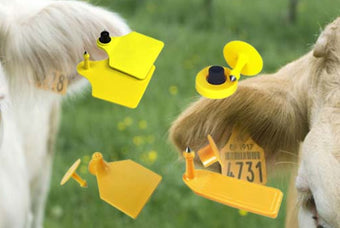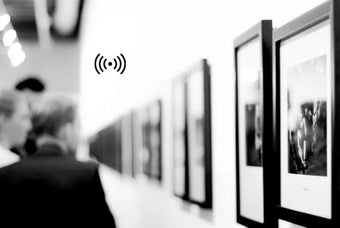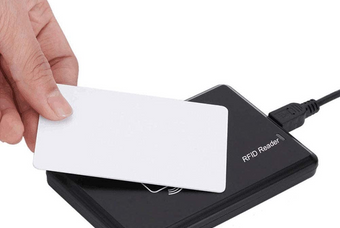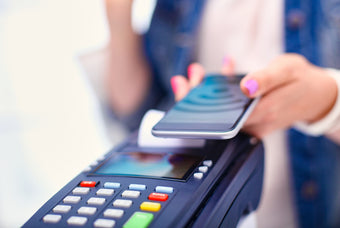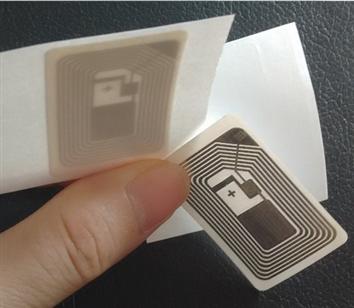A dual-frequency RFID (Radio-Frequency Identification) tag, also known as a multi-frequency RFID tag, is a type of RFID tag that operates on two different frequency bands. RFID technology is widely used for tracking, identification, and data collection in industries ranging from access control and inventory management to logistics and security. Dual-frequency RFID tags take this technology to the next level by providing a single tag that can be utilized in diverse settings, making it a valuable tool for businesses and organizations seeking greater efficiency and adaptability.
The advantages of dual-frequency RFID
mainly include the following two aspects:
Advantage 1: It retains the function of UHF RFID rapid inventory in large quantities
The biggest advantage of UHF RFID is that it has a long transmission distance and can be read in groups. It is very suitable for some scenarios that require quick inventory, especially in the B-side warehousing logistics and sorting links.
Advantage 2: retains the ability of HF RFID to interact with mobile phones
Because NFC on mobile phones is a kind of HF RFID technology, HF RFID tags can interact directly with mobile phones, which greatly expands the use boundary of RFID. Anti-counterfeiting traceability requirements.
Therefore, dual-frequency RFID tag products can not only meet the needs of the B-side for efficient turnover, anti-lost, and visual management, but also meet the needs of the C-side crowd for anti-counterfeiting and traceability, which can form a good closed loop in business.
Due to their versatility and adaptability, here are some common application scenarios for dual-frequency RFID tags:
1. Access Control and Security:
Dual-frequency tags can be used for employee or visitor access control in corporate offices, educational institutions, and secure facilities. They combine the security features of LF RFID with the longer-range capabilities of HF or UHF RFID for enhanced security and convenience.
2.Inventory Management:
Retailers, warehouses, and logistics companies use dual-frequency tags to track inventory and assets. The LF component can help with proximity tracking, while HF or UHF is used for tracking items in storage or during transportation.
3.Supply Chain and Logistics:
Dual-frequency RFID tags are valuable in supply chain management for tracking products from manufacturing facilities to distribution centers and retail stores. They can provide end-to-end visibility into the movement of goods.
4.Healthcare:
In healthcare settings, dual-frequency tags can be used for patient identification, asset tracking, and access control to sensitive areas. LF ensures patient identification, while HF or UHF tracks equipment and supplies.
5.Library and Document Management:
Libraries and document management systems utilize dual-frequency RFID tags to track books, documents, and other materials. The LF component helps identify the items, while the HF or UHF is used for checking items in and out efficiently.
6.Automotive Industry:
In the automotive industry, dual-frequency RFID tags are used for vehicle tracking during manufacturing and for access control to secure areas within automotive plants.
7.Waste Management:
Dual-frequency tags are used in waste management to track and manage waste containers. The LF component helps identify the container's owner, while HF or UHF can help monitor the container's location and status.
8.Livestock and Agriculture:
In agriculture, dual-frequency tags are used for livestock identification and tracking. LF is used for individual animal identification, while HF or UHF may be used for monitoring large herds or flocks.
9.Museum and Art Collections:
Museums and art galleries utilize dual-frequency RFID tags to manage their collections. LF identifies individual pieces, while HF or UHF assists in tracking pieces' locations and movements.
10.Smart Retail:
In smart retail scenarios, dual-frequency RFID tags can be used for both loss prevention (LF) and inventory management (HF or UHF). This allows retailers to track items and prevent theft effectively.
11.Smart Cities:
Dual-frequency RFID can play a role in smart city applications, such as parking management, waste collection, and public transportation. It helps streamline city services and enhance efficiency.
12.Event Management:
Dual-frequency RFID tags are used at events and conferences for attendee access control and tracking. LF can be used for personalized identification, while HF or UHF can monitor attendance.
Asset Tracking and Maintenance:
In various industries, including manufacturing and utilities, dual-frequency tags are employed to track and maintain assets, machinery, and infrastructure.
Dual-frequency RFID tags offer adaptability and compatibility with a broad spectrum of RFID systems, making them suitable for a wide variety of applications where both LF and HF/UHF capabilities are required for efficient tracking, identification, and data collection.

